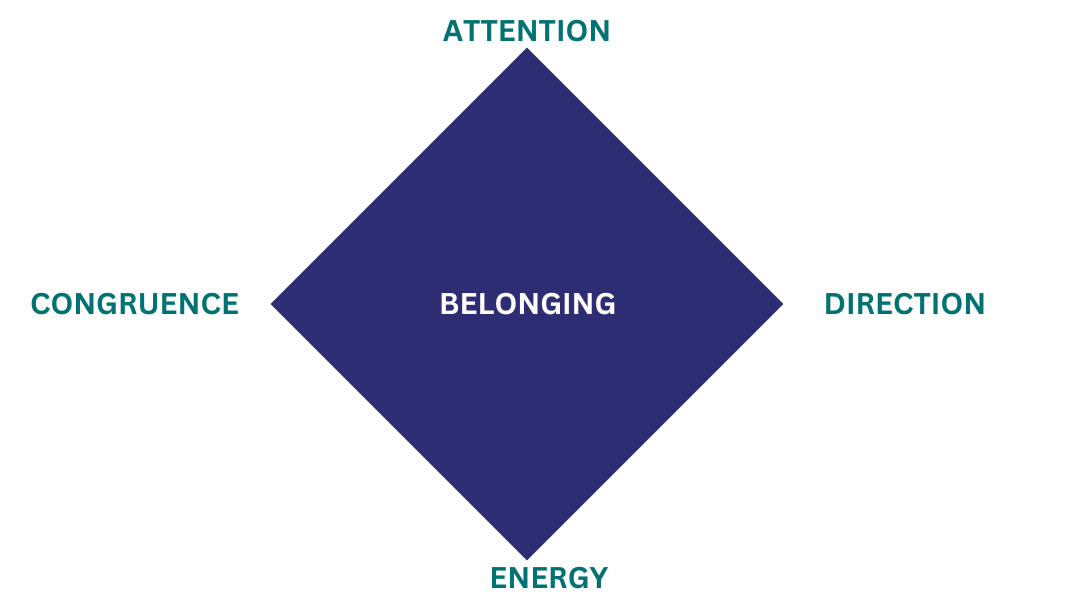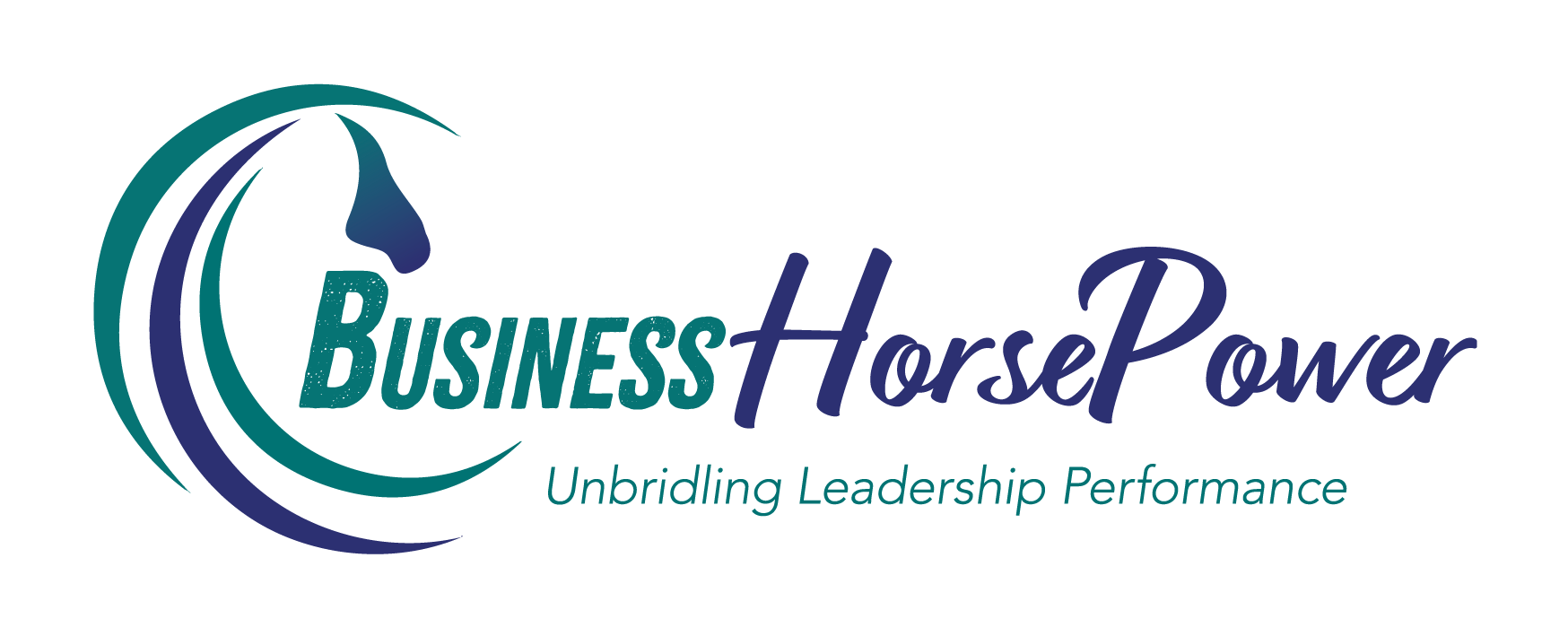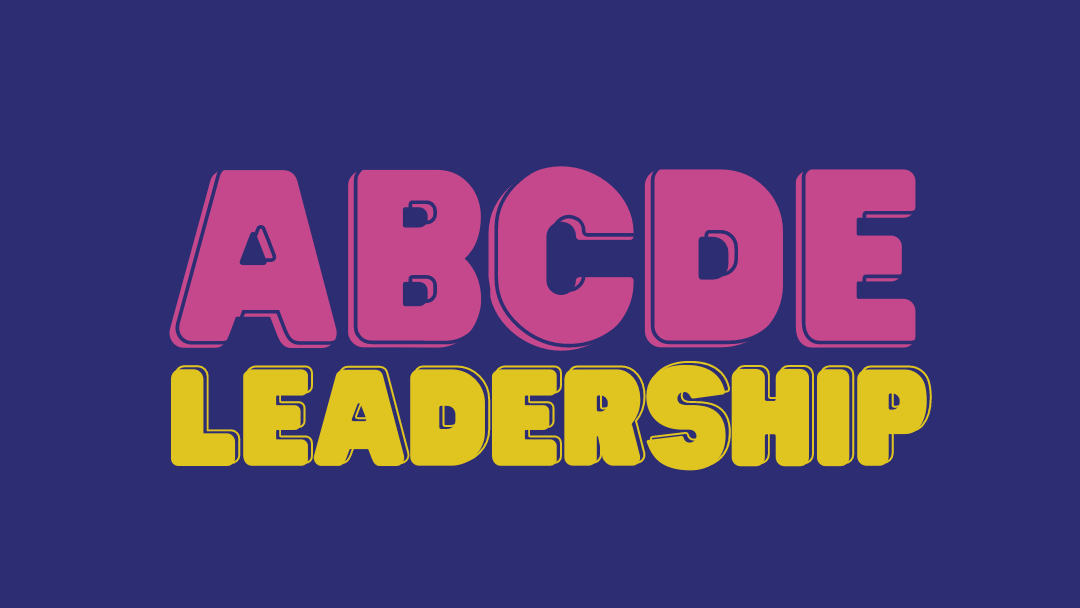
by Julia Felton | Apr 15, 2024
Today, I’m eager to share some enlightening perspectives I’ve gleaned about the transformative approach to leadership that’s rooted in the wisdom of the natural world, specifically the world of horses. This approach has reshaped not just my business strategies, but my life philosophy, and the essence of how I engage with my teams. It’s a lesson in leadership far removed from traditional hierarchies—instead, it’s about the dynamism and distributed responsibilities seen in a horse herd.
This brings us to the heart of today’s discussion: the power of shared leadership. Inspired by how a horse herd operates, with shared roles between the lead mare and the stallion, and each member contributing to the herd’s well-being. Shared leadership is about every team member taking collective responsibility for success. It promotes a collaborative environment where trust, harmony, and unity flourish.
Trust in leadership hinges on four key aspects. Leaders must be attentive to subtle shifts, give clear direction, energize the team appropriately, and exhibit authenticity. This model is articulated through the ABCDE of Shared leadership, inspired by the Diamond Model of Leadership created by TeachingHorse.
Within this model of leadership each letter stands for a different leadership attribute we need to embody to effectively navigate change and so lead our teams to success.
A is for Attention:
Leaders must be observant and aware, not just of the team and environment but also of themselves. Attention is where energy flows, and leaders must discern where to best focus it.
Leaders need to notice what’s happening for ourselves and for our team members, and also for the environment that they’re operating in. And we can notice this by paying attention to our breath, our five senses, those intuitive hits. What we know is that when we get anxious, we get up tight, and we unconsciously hold our breath. This makes our bodies taut. And when we’re in that state of kind of slight anxiety and fear, we can’t pay attention to what’s going on about us as we are so focused on ourselves
Where are you placing your attention? Are you placing your attention on things that can make a real difference? Are you wasting, placing your attention on things that make the you can make no difference to so there’s a real art to where we place our attention. Because wherever we place our attention, that’s where our energy goes
B is for Belonging:
At the core of shared leadership is the sense of belonging. As humans we all want to belong and belonging is integral for any collaborative effort.
And as a team, we all want to belong. Relationships are the lifeblood of teams. As humans, we want to be part of social interaction at some level. And one of the things that the pandemic showed us was actually that we were social creatures. And most of us needed other people to get along with, we want that sense of connection, and belonging that comes as being part of a team.
C is for Congruence:
Leaders must be authentic, with their external actions reflecting their internal beliefs.
Congruence is about the emotional authenticity of leaders. It’s about being in touch with one’s feelings, as they provide essential insights into our thinking and responses to any situation. Authenticity fosters trust and confidence in leadership
The horses are very instinctive about this, they know when it’s time to move, they’re paying attention to what’s going on around us. And they get a gut sense maybe if there’s a predator in the environment, and they go and run away at that point in time. And as leaders, it’s really important that we use our authentic voice, because this helps increase trust and confidence in our leadership. And we need to share with the team what’s happening.
D is for Direction:
Selecting a clear focus point is essential, as is maintaining a balance between the big picture and the next immediate steps.
Direction requires setting a course based on what matters most, aligning with our mission and values. It’s about maintaining momentum, knowing when to amplify our efforts and when to conserve them.
Being in motion is really important. So moving forward becomes a fluid motion between seeing what’s on the horizon and taking your next step. So we need to keep balancing this against the big picture. When we stay too focused on the big picture, we can get confusion about what to do next. But we when we stay too granular, too myopic, then we lose the big picture. And we’re not sure why we need to take the next step. And when we’re leading and moving in the direction, we need to increase our energy to get things moving
What I often see happening in organisations is us trying to solve the problem of a lack of direction with more energy. And that’s just like putting your foot on the accelerator in your car, with no idea of where you’re going, you’re going to end up in the wrong direction.
E is for Energy:
Leaders should manage not just their energy but also the team’s—identifying when it’s high and leveraging it, and recognising when it’s low and recharging it.
Managing energy is crucial for the success of any team. Energy takes various forms: physical, emotional, mental, and spiritual. Each type of energy requires different methods to replenish it, and it’s a leader’s role to facilitate this within their teams. Just like horses conserve energy for when it’s truly needed, we must learn to balance energy expenditure with periods of rest and recharging.
So our role as a leader is to harness that energy to use it for the best good. And when we’re in an organisation, and particularly where the energy is depleted, I think it’s really important that we name what the energy is. For example, I’m sensing a reluctance to share some ideas. Or if we reach an agreement and we’ve reached an agreement really quickly, is there anything else we need to say? And it’s just naming this energy. And us having enough attention on what is happening can totally change the dynamics of a conversation. So we need to trust that if we change the energy, we can change the outcome in different direction
To gain a team members confidence, a leader has to demonstrate that they’re paying attention to what’s going on in the community or the organisation give clear direction, which is focused, inspire energy and are authentic, that their intentions can be trusted. And it’s this confidence in leadership that makes a community or an organisation agile, when the time for change can no longer be avoided.
Reflect on these concepts—consider where your attention lies, the direction you’re pursuing, the energy you’re investing, and the congruence of your actions. Engage with these principles, and I’m confident they will guide you towards more impactful teamwork where you feel a real sense of belonging.
Show Notes:
Here are the highlights from this episode:
(04:04) The VUCA Prime experience.
(10:10) The A.B.C.D.E model of shared leadership.
(15:52) How to harness your team’s energy and use it for good.
(20:17) Choosing a point of focus in leadership.
(22:00) You cannot lead if you can’t feel!
Julia Felton (aka The Business Wrangler) is the founder of Business HorsePower. Business leaders, entrepreneurs and executives hire her to accelerate their business performance by harnessing the energy of their people to work more collaboratively together. By aligning purpose with actions the team achieves exponential results as everyone starts pulling in the same direction.
Julia believes that business is a force for good and through designing purpose-driven businesses that leverage the laws of nature, and the herd, you can create businesses founded on the principles of connection, collaboration and community that make a significant impact in the world.

by Julia Felton | Apr 15, 2024
“It’s not finance, it’s not strategy, it’s not technology, it’s teamwork, that remains the ultimate competitive advantage. Because it’s both so powerful and so rare.”
These words of Patrick Lencioni have inspired me over the years and are one of the reasons for the launch of my new podcast IMPACTFUL Teamwork. Over the years I have come to appreciate the power of teamwork to transform business and escalate its success but that wasn’t always the case.
I confess when I was working in the corporate world I never fully appreciated how my team contributed to my success and it was only when I started my own business, and had no team around me, that my thoughts on this changed.
Today I am deeply passionate about the art of leadership and the science of team dynamics, which is why I am so excited to share this new podcast with you.
If you’re tuning into this conversation, you’re likely shouldering the responsibility of a team, searching for that elusive key to seamless collaboration. You may find yourself entrenched in a silo mentality within your organization, or perhaps you’re struggling with a team that approaches you with problems instead of solutions, lacking the passion and drive you exhibit. I understand these frustrations all too well, and it’s my mission to arm you with practical, actionable strategies that you can apply immediately to overcome these obstacles.
My conviction is that teamwork transcends being a mere function of business—it’s the essence of it. Leaders need to recognise that aligned and engaged team members are a formidable competitive advantage..
Through my work, I’ve observed that many leaders possess untapped potential within their teams but don’t know how to unlock and harness this energy effectively. I’ve also experienced the sheer waste of time, energy, and resources when teams work in isolation, duplicating efforts rather than synergising. In stark contrast, the natural world, including my herd of horses, operates on principles of efficiency and interdependence—a model I believe modern businesses must emulate.
‘IMPACTFUL’ is not just a word but an acronym I’ve coined that embodies the attributes essential for peak performance in leadership and teamwork:
Intuition – Embracing our gut instincts to lead wisely.
Mastering Communication – Excellently conveying and receiving messages.
Personal Boundaries – Establishing clear delineations to stay on course.
Authenticity – Being genuine and vulnerable in our professional roles.
Connection – Building profound and trustworthy relationships.
Trust and Transparency – Laying the groundwork for efficient and effective operations.
Full Attention – Staying present, ensuring every moment counts.
Unity – Championing harmony and collaborative success.
Leader Self-Care – Recognising the need for self-awareness and self-preservation to fuel team vitality.
In our discussions, I’ll be debunking myths that often cripple team effectiveness. For instance, diversity within teams is not a hurdle but a strength. Healthy conflict is not a team’s downfall but rather its lifeblood when harnessed appropriately. And the assumption that everyone enjoys teamwork is simply not supported by research—thus, understanding each team member’s unique drivers and working styles is crucial.
Another vital distinction I’ve realised is that managing a team’s dynamics is a far cry from day-to-day operational management. It’s about empowerment versus delegation, inspiration versus direction. Moreover, the myth that senior leaders naturally foster teamwork is often just that—a myth. Real teamwork means sharing power and control, something that can be daunting for leaders concerned about their authority.
In this podcast, I’ll be drawing parallels between the harmonious interplay found in nature and the effective functioning of business teams. By learning from my horse herd, we will uncover lessons on maintaining health, harmony, and unity, crucial for any team’s survival and prosperity.
I invite you to ponder this: How can you cultivate impactful teams that not only elevate your business but also contribute positively to the fabric of our global business community? Let this be the beginning of our conversation, not the end.
Over the upcoming episodes, I look forward to unravelling the secrets of successful teamwork with you and urge you to reach out as we navigate this path together towards creating more engaged, productive, and thriving organisations.
Here are the highlights from this episode:
(02:59) Teamwork is the ultimate competitive advantage.
(12:43) Success is a team sport and we all need to participate to win.
(19:18) Trust and transparency.
(24:03) Conflict as an energy source.
(28:44) Nature and the importance of teamwork.
Julia Felton (aka The Business Wrangler) is the founder of Business HorsePower. Business leaders, entrepreneurs and executives hire her to accelerate their business performance by harnessing the energy of their people to work more collaboratively together. By aligning purpose with actions the team achieves exponential results as everyone starts pulling in the same direction.
Julia believes that business is a force for good and through designing purpose-driven businesses that leverage the laws of nature, and the herd, you can create businesses founded on the principles of connection, collaboration and community that make a significant impact in the world.
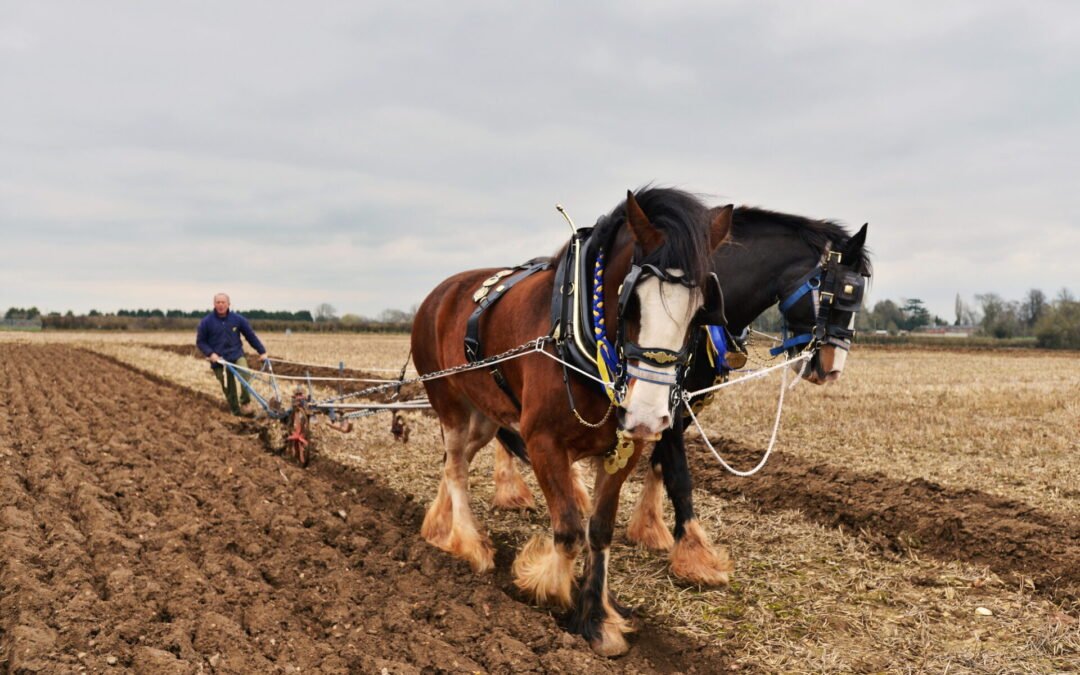
by Julia Felton | Apr 12, 2024
Hi, I’m Julia Felton, aka the Business Wrangler, and I’m a leadership and team engagement specialist. Thanks for joining me to learn more about IMPACTFUL Teamwork.
This podcast is for you if you’re a business owner, business leader, entrepreneur or executive who knows they want to make a real impact in the world and knows they can’t do it alone.
You know you need a team to help you but how do you get your team on the same page. How do you get them pulling in the same direction and not pulling apart. How do you create a connected, collaborative, cohesive team.
In this podcast I will be sharing with you strategies and tactics to help you become the best leader you can be so that you can inspire IMPACTFUL teamwork. Teams that make a real difference. Each podcast will be full of actionable steps you can take and implement immediately.
We’ll also be interviewing guests to learn from them what has worked for them and importantly what hasn’t.
Rest assured there will also be a good dose of wisdom from the natural world as I believe that nature contains a blueprint for how we can all work together to create engaged, enthusiastic, empowered teams.
.
Julia Felton (aka The Business Wrangler) is the founder of Business HorsePower. Business leaders, entrepreneurs and executives hire her to accelerate their business performance by harnessing the energy of their people to work more collaboratively together. By aligning purpose with actions the team achieves exponential results as everyone starts pulling in the same direction.
Julia believes that business is a force for good and through designing purpose-driven businesses that leverage the laws of nature, and the herd, you can create businesses founded on the principles of connection, collaboration and community that make a significant impact in the world.

by Julia Felton | Mar 11, 2024
n the ever-evolving landscape of business, one thing remains constant: the paramount importance of organisational culture.
Peter Drucker’s famous quote, “Culture eats strategy for breakfast,” succinctly captures the significance of culture in shaping the destiny of companies.
However, in the realm of training and development, we might equally assert that “Culture eats your training for breakfast.” Indeed, the organisational culture can either foster or hinder the effectiveness of training efforts. Without proactive measures to counter-cultural inertia, organisations risk undermining the very training initiatives designed to propel them forward.
Consider this scenario: You invest significant resources into training your workforce on cutting-edge methodologies and best practices. Yet, upon returning to their roles, employees revert to familiar routines and approaches, neglecting the newfound knowledge and skills. Why does this happen? It’s often the result of entrenched cultural norms that prioritise familiarity over innovation and memory over critical thinking.
During training sessions, it’s essential to engage participants in reflective discussions about the organisational culture’s influence on their behaviour and decision-making. Ask them how tightly they feel bound by existing norms and practices. Encourage open dialogue about the challenges they anticipate in applying their learning to their job roles. By acknowledging and addressing these cultural barriers upfront, organisations can better prepare employees for the transition from the classroom to the workplace.
The transfer of learning from training environments to real-world applications is often fraught with obstacles, chief among them being cultural resistance. Employees may encounter resistance from peers or supervisors who are entrenched in traditional methods and sceptical of change. Additionally, organizational structures and processes may inadvertently reinforce the status quo, making it difficult for individuals to adopt new approaches.
So, how can organisations navigate this cultural headwind and ensure that training initiatives yield tangible results? Here are some strategies to consider:
- Cultural Awareness: Foster a culture of awareness by encouraging employees to critically examine existing norms and practices. Create opportunities for open dialogue and feedback, allowing individuals to voice their concerns and perspectives without fear of retribution.
- Leadership Buy-In: Secure buy-in from organizational leaders by demonstrating the value of training initiatives in driving innovation and growth. Leaders must lead by example, actively championing new approaches and supporting employees in their learning journey.
- Continuous Reinforcement: Recognize that changing cultural norms takes time and ongoing effort. Implement mechanisms for continuous reinforcement, such as follow-up training sessions, coaching, and mentorship programs, to sustain momentum and ensure that new behaviours become ingrained habits.
- Incentivise Learning: Create incentives and rewards for employees who embrace new methodologies and demonstrate a willingness to challenge the status quo. By aligning incentives with desired behaviours, organisations can motivate individuals to actively engage in the learning process and apply their knowledge effectively.
- Cross-Functional Collaboration: Foster collaboration across departments and teams to break down silos and facilitate knowledge sharing. Encourage employees to collaborate on projects and initiatives that require the application of new skills, fostering a culture of experimentation and learning.
In conclusion, organisational culture plays a decisive role in shaping the success of training initiatives. By acknowledging and addressing cultural inertia, organisations can create an environment conducive to learning and innovation.
Through a combination of awareness, leadership support, continuous reinforcement, incentivisation, and collaboration, organisations can overcome cultural barriers and unleash the full potential of their workforce.
Remember, culture may eat your training for breakfast, but with the right approach, you can turn it into a nourishing feast for growth and development.
Julia Felton (aka The Business Wrangler) is the founder of Business HorsePower. Business leaders, entrepreneurs and executives hire her to accelerate their business performance by harnessing the energy of their people to work more collaboratively together. By aligning purpose with actions the team achieves exponential results as everyone starts pulling in the same direction.
Julia believes that business is a force for good and through designing purpose-driven businesses that leverage the laws of nature, and the herd, you can create businesses founded on the principles of connection, collaboration and community that make a significant impact in the world.
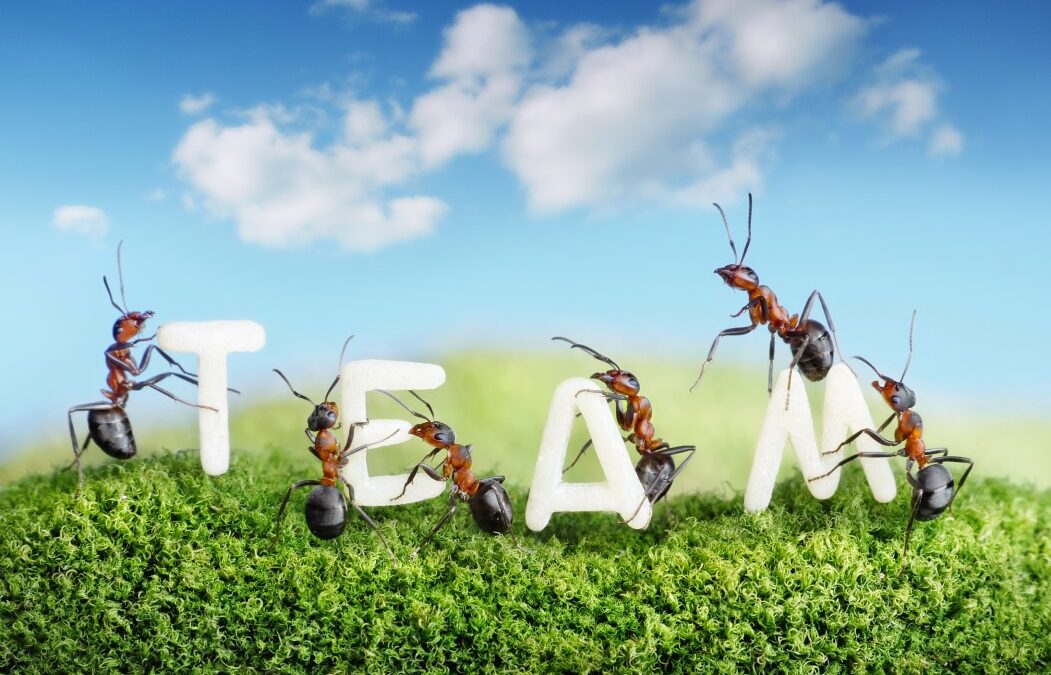
by Julia Felton | Feb 24, 2024
Teamwork is paramount to the success of any business and leaders need to understand that without every team member pulling together in the same direction (aka with the same purpose) then success is likely to be curtailed, maybe not in the short term but definitely over the longer term.
Whilst individuals play the game it is teams that win championships whether that is in the sports arena or on the business playing field. Teamwork remains the ultimate competitive advantage in business today, because it is so powerful and rare.
“Not Finance. Not Strategy. Not Technology. It is teamwork that remains the ultimate competitive advantage, both because it is so powerful and so rare” ‒ Patrick Lencioni
There are several benefits of being in a team and these include:
- Teams involve more people and therefore comprise more resources – time, ideas and energy – available than one individual would have
- Teams allow the leaders to maximise their potential and minimise their weaknesses
- Teams provide multiple perspectives on how to reach the goal, as each individual will see the problem in a different light. This allows for a creative flow of ideas, and the stumbling blocks that no one person might see can easily be navigated
- Teams share the credit for victories and the blame for losses. This fosters genuine humility and authentic communication
- Teams help keep leaders accountable for the goals
- Teams can simply do more than the individual
So why do business leaders fail to harness their teams for success and what are some of the myths we believe about teams. I believe there are five myths that keep many leaders stuck, not operating effectively.
Myth One: Teams are harmonious groups of people who compromise their needs for the sake of the group
Reality One: Good teams are made up of a diverse group of people with different perspectives and needs. When this diversity is recognised and embraced it becomes a real strength that can help the team overcome roadblocks that might derail a project.
So with this in mind it is important that within the team we identify the range of talents of all the team members and help team members understand the impact and contribution they can give to the team. Only then will team members feel engaged and motivated and want to actively participate.
Myth Two: Team conflict is unhealthy
Reality Two: Conflict can be healthy and should be harnessed for the common good, rather than suppressed.
Conflict is an energy source that when directed towards the team’s primary goal or mission can help create momentum and actually move a project forward. The challenge comes from the fact that many people dislike conflict and so suppress it. This creates frustration and a negative build-up of energy that ultimately can derail a project. Better the conflicting energy is surfaced and channelled in a positive way to come up with new ideas and approaches that help drive the project forward rather than derail it
Myth Three: Most people like teamwork
Reality Three: Whilst we often think that people enjoy working in teams, after all humans are social animals and we enjoy interaction with others, research by the Wright Consultancy discovered that only 33% of the working population enjoyed teamwork, 33% of the working population preferred working alone and solo, whilst the remaining 33% were pretty neutral as to their stance.
The challenge then for leaders is to know the drivers of the people in their teams and their preferred working style and then create roles that best leverage that person’s skills and method of working
Myth Four: Teams are easy to influence and manage
Reality Four: Leading and managing teams requires a different set of skills from that required for day-to-day management. This is because when you are leading teams you need to be able to inspire and motivate others. Also, you need to practice and understand the difference between delegation and empowerment, as teams work best when given direction and then allowed to decide how to reach that goal themselves. Micro-management hampers engagement and stops innovation as team members need to feel that the leader has their back and trusts them implicitly to do the job
Myth Five: Senior Leaders encourage teamwork
Reality Five: Most leaders are anxious about teamwork and the potential loss of power or control
A study of European managers in the 1990’s discovered that whilst senior leaders outwardly encouraged teamwork internally they were uncomfortable with the process and the potential for it exposing their own weaknesses and loss of control. This then often results in office politics with one team withholding resources from another in order to exert their authority.
Much of this thinking is driven by fear because great leaders realise they always need to hire people better than themselves so that their weaknesses can be mitigated for the ongoing success of the business. When leaders realise that it is results that matter and not their ego, they become more collaborative and work together across various aspects of the business to achieve success.
Nature understands the importance of teamwork and how everything is interdependent and synergistic. This is what drives unity and harmony in nature. So perhaps there is something we can learn from it and apply to our own efforts at improving teamwork, because as in the words of Simon Mainwaring
“Creating a better world requires teamwork, partnerships and collaboration, as we need an entire army of companies to work together to build a better world within the next few decades. This means corporations must embrace the benefit of co-operating with one another”
Julia Felton (aka The Business Wrangler) is the founder of Business HorsePower. Business leaders, entrepreneurs and executives hire her to accelerate their business performance by harnessing the energy of their people to work more collaboratively together. By aligning purpose with actions the team achieves exponential results as everyone starts pulling in the same direction.
Julia believes that business is a force for good and through designing purpose-driven businesses that leverage the laws of nature, and the herd, you can create businesses founded on the principles of connection, collaboration and community that make a significant impact in the world.

by Julia Felton | Feb 14, 2024
The recent England v Wales rugby game as part of the 2024 Six Nations Championship was a masterpiece in how The GC Index can be used to assess and develop high-performance teams.
England, with their Game Changer energy, set the tone early on with bold and inventive plays that kept Wales on the back foot. Their strategic approach, led by the Strategist energy, allowed them to anticipate Wales’ moves and exploit openings with precision.
Wales, however, demonstrated their resilience and adaptability, embodying the Play Maker archetype by orchestrating intricate manoeuvres, using the right players at the right moments to capitalise on fleeting opportunities. With their ability to read the game and make split-second decisions, Wales remained a formidable adversary throughout.
As the match progressed, both teams relied on their Polisher qualities to refine their execution and maintain momentum. England’s attention to detail and flawless execution bolstered their lead, while Wales’ commitment to perfecting their tactics kept them within striking distance.
In the crucial moments of the game, it was the Implementer energy that proved decisive. England’s disciplined approach and methodical game management secured them a hard-fought victory, as they meticulously executed their game plan to overcome Wales’ determined resistance.
In the end, England emerged triumphant in a closely contested encounter, showcasing the power of understanding and leveraging The GC Index proclivities to achieve success on the rugby field.
Reach out to me if you want to understand how you can use the GC Index to change the way you think about teams, performance, strategy and impact.
At Business HorsePower we use the GC Index with teams, individuals and organisations looking to maximise their impact and success.
Thanks to my mentor and The GC Index founder, Nathan Ott for the inspiration behind this.
#thegcindex #teamperformance #rugby #sixnations
Julia Felton (aka The Business Wrangler) is the founder of Business HorsePower. Business leaders, entrepreneurs and executives hire her to accelerate their business performance by harnessing the energy of their people to work more collaboratively together. By aligning purpose with actions the team achieves exponential results as everyone starts pulling in the same direction.
Julia believes that business is a force for good and through designing purpose-driven businesses that leverage the laws of nature, and the herd, you can create businesses founded on the principles of connection, collaboration and community that make a significant impact in the world.

by Julia Felton | Dec 1, 2023
Having sent a large part of this month out in nature, including studying wild horses in Poland I have gained some profound insights on collaboration, cooperation, and profitability, all inspired by the wisdom of Mother Nature herself. I firmly believe that nature holds the key to solving many of our world’s problems, so I’m excited to explore how we can draw inspiration from her remarkable ecosystems to create a more harmonious and prosperous future.
In a world driven by profit margins and competition, it’s easy to overlook the incredible lessons that the natural world offers. Nature, after all, has been refining its strategies for billions of years, and it has a lot to teach us about working together for mutual benefit.
Lesson 1: Symbiotic Partnerships
One of nature’s most stunning examples of collaboration can be found in the intricate relationships between species. Take, for instance, the extraordinary partnerships between bees and flowers. Flowers provide nectar and pollen, essential for bees’ survival, while bees aid in pollination, enabling the flowers to reproduce. This co-dependency is not solely about profit for either party; it’s a mutually beneficial relationship that ensures the continuation of both species.
In the business world, we can learn from these partnerships by seeking symbiotic relationships that benefit all involved parties. Collaboration doesn’t always have to be about immediate financial gain; it can also be about mutual support, shared resources, and a long-term perspective.
Lesson 2: Ecosystem Resilience
Nature’s ecosystems are models of resilience and sustainability. When one component of an ecosystem is under stress or faces a challenge, the entire system often adapts to support it. For example, when a drought threatens a forest, the trees release water vapour into the air, creating their microclimate, which can help prevent further moisture loss.
In the business world, we can apply this lesson by fostering environments where teams and organisations adapt and support one another when facing challenges. This resilience ensures that setbacks are only temporary and can lead to greater collective success in the long run.
Lesson 3: Diversity and Inclusion
Biodiversity in nature is not just a nice concept; it’s a critical element for the health and survival of ecosystems. A rich diversity of species contributes to the overall resilience and productivity of an ecosystem. Different species fulfil various roles, each one essential to the functioning of the whole.
Likewise, in business, diversity and inclusion should not be viewed solely as a matter of compliance but as a strategic advantage. A team with diverse backgrounds, experiences, and perspectives is better equipped to tackle complex problems and adapt to an ever-changing business landscape.
Lesson 4: Adaptation and Innovation
Nature is constantly evolving and innovating. Species that cannot adapt to changing conditions face extinction. On the other hand, those that embrace change and innovation thrive. This adaptability is a powerful lesson for the business world, which is constantly undergoing technological, social, and economic transformations.
In conclusion, Mother Nature is a treasure trove of lessons that we can apply to the business world and beyond. By focusing on collaboration, cooperation, and long-term benefits rather than immediate profit, we can create a future that is not only profitable but also sustainable and harmonious. It’s time we recognise that the natural world is our most profound teacher, guiding us toward a more prosperous and balanced future. Let’s embrace these lessons and build a world where we work together, just like the ecosystems that have thrived for eons.
Julia Felton (aka The Business Wrangler) is the founder of Business HorsePower. Business leaders, entrepreneurs and executives hire her to accelerate their business performance by harnessing the energy of their people to work more collaboratively together. By aligning purpose with actions the team achieves exponential results as everyone starts pulling in the same direction.
Julia believes that business is a force for good and through designing purpose-driven businesses that leverage the laws of nature, and the herd, you can create businesses founded on the principles of connection, collaboration and community that make a significant impact in the world.

by Julia Felton | Nov 23, 2023
Increasingly leaders are beginning to understand the power that the environment plays in business and how everything that happens is interconnected. An individual, a team and an organisation do not exist in isolation but rather, they are part of a complex eco-system, where one part impacts the next.
Consequently, traditional leadership thinking that focuses on the “me rather than we” approach is becoming outdated. Great leaders understand that business is never about them and their ego but rather about how they can serve those that they work with – either directly or indirectly. This results in leaders having to adopt an eco-system mindset.
So what is an eco-system mindset?
An eco-system mindset involves having an ‘outside in’ perspective. It means that rather than thinking first about self and team and then what could come from partnering with other individuals and teams, the ecosystem mindset turns this on its head and looks at the vision, purpose and strategy for the whole, and then sees the parts that individuals and teams could contribute.
This can be challenging because at some point, an individual or team may need to step aside for the good of the ecosystem, something not everyone is ready to embrace yet. However, when individuals and teams adopt an eco-system mindset, they are better positioned to accept or even make this choice because they are able to see additional opportunities where they can contribute and make an impact.
Amy Edmondson, in her book Teaming, writes that ‘fast-moving work environments need people who know how to team, people who have the skills and flexibility to act in moments of potential collaboration when and where they appear.’
In the VUCA world in which we will, where adaptability and flexibility are key to navigating uncertainty, the eco-system mindset focuses on opportunities for hyper-collaboration, where the people, projects, and even the processes and approaches that are prioritised shift constantly. In this environment, rather than focusing on team effectiveness at the level of the team, it is more effective to develop teaming skills in every individual.
Then, no matter which team a person is on, they can contribute to its success by bringing their skills for being an effective team member. The effectiveness of a team where all team members bring a teaming skillset never depends on just one person, making it resilient in the face of the changes and challenges hyper-collaboration brings.
The development of the COVID vaccine is one such example. No one company had the answer in isolation but by working together, there were many partnerships were formed, some of them quite unlikely, that allowed this innovative vaccine to be created and made available in such a short time frame.
Hyper-collaboration is a concept based on the belief that most effective team outputs will result from collaborations with other, sometimes unexpected, partners. Partners that have a completely new perspective on the current issues we are facing. This diversity and variety of complementary capabilities coming together to solve a particular problem create success rather than stability and longevity.
If you thought about challenges this way, and knew that a solution already existed somewhere, but most likely not in the first place you looked, how would that change your approach?
Cracking The Code
Four avenues that you might want to explore:
- Look for the unexpected: consciously think outside the box and explore opportunities and partnerships in other industries/sectors
- Expand your reach: when it comes to hyper-collaboration it’s a case of the more the merrier. The more diverse the perspective the more opportunities for a significant breakthrough. Sure, more partners is challenging to manage but the benefits significantly outweigh the challenges.
- What new technology can you adopt: when used appropriately technology can be a great enabler of change, so what technology can you apply from related industries to help solve your problems.
- Embrace change: the only certainty is that there will be change so make sure to inform and educate all stakeholders about what is happening and ensure they understand how this relates to the overall purpose and mission of the business.
Finally, given the increasingly complicated needs we are facing, in our teams, organisations, regions, and even in the world, hyper-collaboration is likely to increase even further. We can prepare people for successful hyper-collaboration by building an eco-system mindset and teaming skills in everyone in our organisation.
This is not something that will happen overnight, but with consistent action we can help move the needle and in doing so create empowered, productive teams that are agile and can respond to the uncertain conditions in which we all now live.
Julia Felton (aka The Business Wrangler) is the founder of Business HorsePower. Business leaders, entrepreneurs and executives hire her to accelerate their business performance by harnessing the energy of their people to work more collaboratively together. By aligning purpose with actions the team achieves exponential results as everyone starts pulling in the same direction.
Julia believes that business is a force for good and through designing purpose-driven businesses that leverage the laws of nature, and the herd, you can create businesses founded on the principles of connection, collaboration and community that make a significant impact in the world.

by Julia Felton | Oct 10, 2023
In the fast-paced and ever-evolving landscape of today’s business world, a company’s success often hinges on the collective capabilities of its teams. As a business leader, you understand the importance of investing in your team’s growth and development. One essential aspect that should not be overlooked is Team Emotional Intelligence (Team EQ).
Team-level emotional intelligence, or Team EQ, refers to a group’s ability to interact harmoniously, both internally among team members and externally with individuals from other departments, teams, and even outside the organization. Teams that excel in Team EQ not only recognise unproductive emotions when they surface but also manage them constructively, paving the way to overcome interpersonal and inter-team challenges and achieve peak performance.
Research has shown that teams with strong EQ skills are more adept at navigating challenges, making effective decisions, and ultimately achieving peak performance. So, the question arises: How can you improve the performance of your team through Team Emotional Intelligence?
The case for team emotional intelligence
Teams are the backbone of any organisation, and they consist of individuals with varying levels of emotional intelligence. To unlock your team’s full potential, it’s imperative to provide them with opportunities to develop emotional intelligence skills collectively. Team EQ goes beyond individual emotional awareness; it involves the ability of team members to interact harmoniously within the group, across departments, and even outside the organization. Teams that excel in Team EQ can recognise and manage unproductive emotions constructively, surmount interpersonal and inter-team challenges, and achieve exceptional results.
Highly emotionally intelligent teams offer a plethora of benefits, including better decision-making, fostering a positive work environment, and increased adaptability to unforeseen changes such as virtual work environments, personnel shifts, shifting priorities, or intensified competition.
The 4 core team EQ skills
To harness the power of Team Emotional Intelligence effectively, it’s vital to understand the four core skills that make up a high EQ team:
- Emotion Awareness: Team members are attuned to their own emotions.
- Emotion Management: They can manage their emotions effectively.
- Internal Relationship Management: Positive working relationships are nurtured within the team.
- External Relationship Management: Team members can build relationships outside the team.
Team EQ skills in action
Consider the example of nursing teams, where high levels of Team EQ are paramount. Emotion awareness and management are crucial in high-stress, fast-paced environments where decisions can have life-altering consequences. Teams with strong internal relationship management can work cohesively and efficiently, supporting each other during extended shifts or demanding situations. External relationship management ensures compassionate care for patients and their families, leading to higher patient care ratings.
Components of team emotional intelligence
Team EQ serves as the foundation for a host of critical skills, including effective communication, empathy, and influence. Understanding and respecting teammates’ emotions enhance a team’s ability to work collaboratively and adapt swiftly to change.
From insights to action
Perhaps the most encouraging insight from EQ research is that Team EQ skills can be developed over time. This means that teams that initially score low in Team EQ can make significant improvements within six months to a year with dedicated practice. This holds true across professions and industries, making it a universally applicable concept.
As a business leader, investing in your team’s emotional intelligence is an investment in your organisation’s success. By nurturing Team Emotional Intelligence, you empower your teams to overcome challenges, foster positive working environments, and adapt gracefully to the ever-changing business landscape.
The result? Improved team performance and a brighter future for your company.
Julia Felton (aka The Business Wrangler) is the founder of Business HorsePower. Business leaders, entrepreneurs and executives hire her to accelerate their business performance by harnessing the energy of their people to work more collaboratively together. By aligning purpose with actions the team achieves exponential results as everyone starts pulling in the same direction.
Julia believes that business is a force for good and through designing purpose-driven businesses that leverage the laws of nature, and the herd, you can create businesses founded on the principles of connection, collaboration and community that make a significant impact in the world.
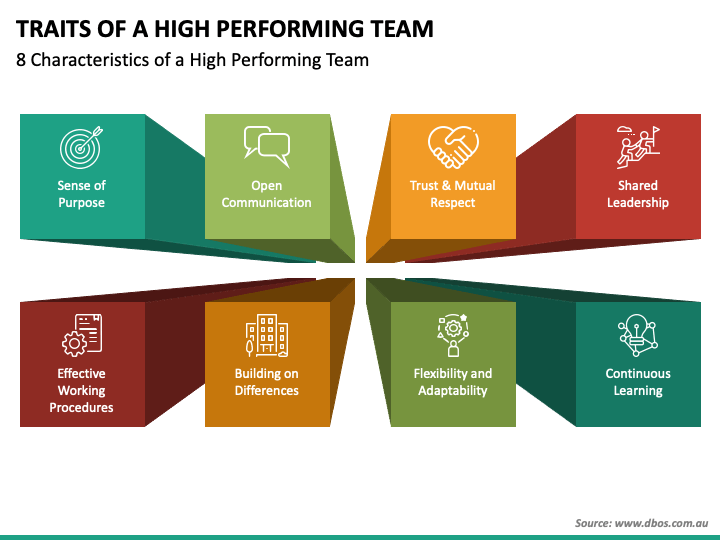
by Julia Felton | Sep 12, 2023
The three psychological needs essential in a high-performing team are autonomy, competence, and relatedness.
Of these, relatedness, or the desire to feel connected to others, has always been the trickiest for organisations to cultivate. It’s one thing to attract talented employees — but how exactly do you get them to like each other? When people feel psychologically fulfilled, they tend to be healthier, happier, and more productive.
Here are the 8 characteristics of a high-performing team with strong ‘relatedness’
- Sense of Purpose:
Individuals with a sense of purpose have clearly defined their mission and goals since the beginning. These people have set their eyes on the priorities and are driven with a strong focus on results and solution.
- Open Communication:
One of the most important characteristics of a high-performing team is open communication. Members who are not afraid to express their ideas and thoughts, as well as listen to what others have to say, are indeed professionals.
- Trust and Mutual Respect:
Respect and trust are two words that correlate with each other. In a professional setting, a leader and its followers do exist. As part of a team, both should learn how to trust and respect each other.
- Shared Leadership:
An effective leader asks for ideas and suggestions from their members. They value their team’s insights and are not autocratic. This kind of leader understands the key role of their members.
- Effective Working Procedures:
Aside from being highly skilled, effective team leaders are also resourceful. They don’t stop at “good” but rather aim for the “best”, every chance they get. They encourage creativity and find the most outstanding way to achieve their goal.
- Building on Differences:
Efficient leaders don’t look at differences as drawbacks of an individual. Instead, they use it as a weapon to create alternatives and other approaches that may be useful in different situations.
- Flexibility and Adaptability:
A high-performing team consists of adaptable and agile individuals. Variables like a fast-paced working environment don’t scare these kinds of people for they can easily adjust to any given situation.
- Continuous Learning:
The hunger for discoveries and newly acquired knowledge is the last characteristic of a high-performing team. Their desire to learn everything that they can or what might help improve their craft is an essential matter.
A great way to help team members understand their relatedness to others is to help them appreciate the value and contribution they make to any team. We do this by measuring their energy for impact using the GC Index.
Julia Felton (aka The Business Wrangler) is the founder of Business HorsePower. Business leaders, entrepreneurs and executives hire her to accelerate their business performance by harnessing the energy of their people to work more collaboratively together. By aligning purpose with actions the team achieves exponential results as everyone starts pulling in the same direction.
Julia believes that business is a force for good and through designing purpose-driven businesses that leverage the laws of nature, and the herd, you can create businesses founded on the principles of connection, collaboration and community that make a significant impact in the world.

